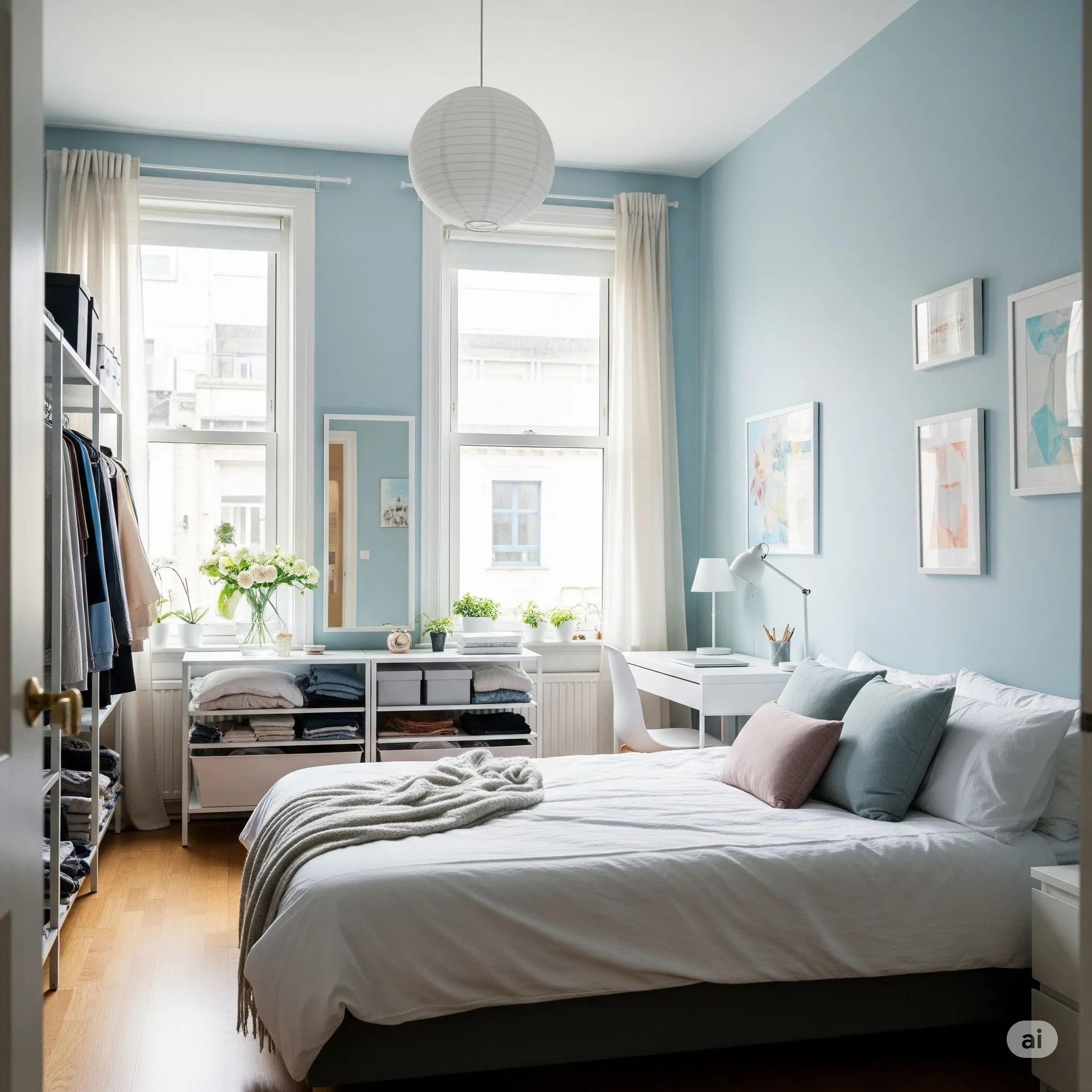Decorating a small space can be a rewarding challenge. With limited square footage, every decision matters—from furniture selection to color palettes and lighting. The goal is to create a home that feels open, functional, and stylish without feeling cramped. In this guide, you’ll discover smart strategies to make a small space feel bigger, brighter, and beautifully put together—no matter its size.
Choose Light and Neutral Colors
Color plays a crucial role in how large or small a space feels. Light, neutral tones help reflect light and create a sense of openness.
Color Tips:
- Use white, soft gray, beige, or pale pastels for walls.
- Keep the color palette consistent to maintain visual flow.
- Add pops of color with accessories, not large pieces.
Lighter tones help eliminate visual barriers and allow the eye to travel smoothly through the room.
Use Multi-Functional Furniture
When space is limited, furniture should do more than just one job. Look for pieces that provide both function and storage.
Smart Furniture Ideas:
- Ottomans with hidden storage.
- Sofa beds or daybeds for sleeping and lounging.
- Extendable dining tables or nesting tables.
- Benches with built-in compartments.
Choose sleek, clean-lined pieces that don’t overwhelm the room visually.
Opt for Leggy Furniture and Open Bases
Furniture with legs and open frames creates a sense of airiness by exposing more floor area, which helps the space feel less crowded.
Open Base Examples:
- Armchairs and sofas with visible legs.
- Coffee tables with glass tops and metal frames.
- Floating nightstands or shelves instead of bulky dressers.
This style keeps the room feeling light and breathable.
Use Vertical Space
In small rooms, you may not have a lot of horizontal real estate—but you can go up. Vertical storage and decor draw the eye upward and maximize your space.
Vertical Space Ideas:
- Tall bookcases or shelving units.
- Wall-mounted cabinets, hooks, or pegboards.
- Hanging plants or vertical gardens.
- Floor-to-ceiling curtains to emphasize height.
Taking advantage of height keeps floors clear and rooms more organized.
Create Zones to Define Function
Even in small spaces, you can carve out functional “zones” for different activities using layout, rugs, and lighting.
Zoning Ideas:
- Use a rug to define the living area from the workspace.
- Place a floor lamp and side table in a corner for a reading nook.
- Separate the sleeping area in a studio with a screen or open shelf.
Zones help the space feel intentional rather than cramped.
Incorporate Mirrors to Expand Space
Mirrors are a tried-and-true trick for visually enlarging a room. They reflect light and scenery, doubling the perceived size of the area.
Mirror Tips:
- Place a large mirror across from a window to reflect natural light.
- Use mirrored furniture or decor to add reflection subtly.
- Hang a gallery of small mirrors in a hallway or entryway.
The room will feel more open and brighter with just one or two well-placed mirrors.
Limit Clutter and Keep Surfaces Clear
In small spaces, clutter accumulates quickly—and it makes rooms feel tighter and messier. Keep surfaces clean and embrace minimalism.
Decluttering Tips:
- Only display decor you love and use.
- Store seasonal or rarely used items in bins under the bed or sofa.
- Use baskets, trays, and boxes to group smaller items.
- Keep countertops and tables clear whenever possible.
A tidy space always feels more spacious.
Use Smart Storage Solutions
Built-in or hidden storage can keep things organized and out of sight—essential in tight quarters.
Smart Storage Ideas:
- Install drawers under the bed or invest in a storage bed.
- Hang over-the-door organizers on closets or bathroom doors.
- Use vertical shelving units in corners and above doorways.
- Store items inside furniture (benches, ottomans, side tables).
The more you can store vertically or invisibly, the more open your space will feel.
Keep the Layout Simple and Open
A cramped layout can make a space feel claustrophobic, no matter how well it’s decorated. Allow for clear paths and breathing room around furniture.
Layout Principles:
- Leave at least 60 cm (24 in) of clearance for walkways.
- Don’t push every piece against the wall—floating furniture can improve flow.
- Avoid oversized furniture that overpowers the space.
Visual balance and flow are key in making a room feel livable and inviting.
Decorate with Intention
In a small space, every object has a visual impact. Choose decor pieces carefully, focusing on quality and meaning over quantity.
Thoughtful Decor Tips:
- Use fewer, larger decorative pieces instead of many small ones.
- Incorporate personal elements—art, travel souvenirs, or handmade items.
- Stick to a cohesive style or color scheme for harmony.
Intentional decorating prevents visual clutter and makes the space feel curated and calm.
Final Thoughts: Design With Space in Mind
Decorating a small space requires creativity, restraint, and intention—but the results can be just as beautiful and livable as in larger homes. With smart furniture, light colors, vertical storage, and minimal clutter, even the tiniest room can feel open, stylish, and functional.
Remember, small doesn’t mean limiting. It means being thoughtful. Focus on what you love and what works for your lifestyle, and let your design reflect that—with space to breathe.
